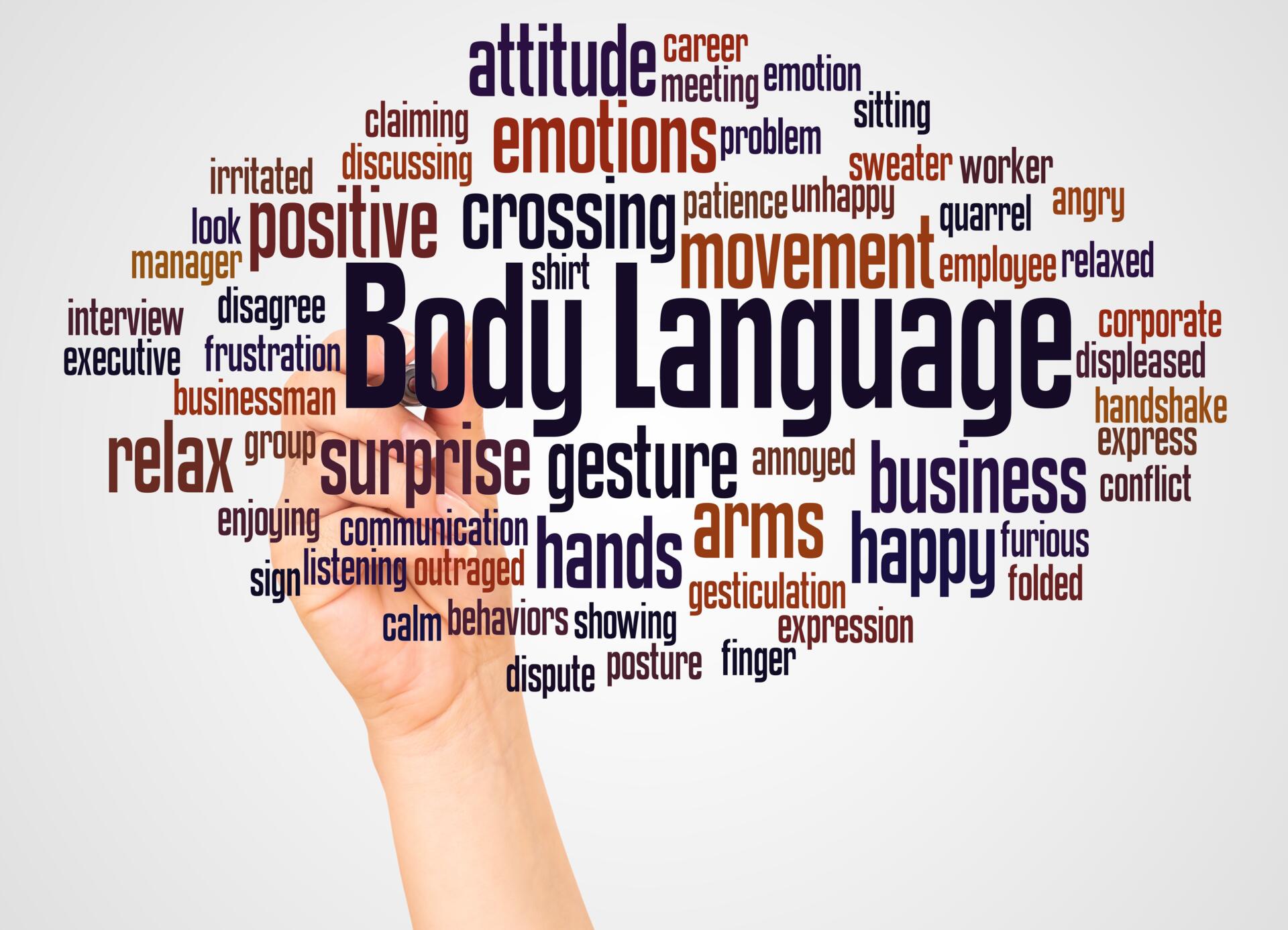
The Loudest Language
Albert Mehrabian’s 7-38-55 Communication Model says that 7% of the meaning of feelings and attitudes takes place through the words we use in spoken communications, while 38% takes place through tone and voice and the remaining 55% of communication of these factors take place through the body language we use (specifically our facial expressions). Body language is the loudest language.
Words definitely matter and how we say them matters as well. If our body language tells a different story than the words leaving our mouths, whatever we are saying most likely will not be heard.
Negative Body Language
Have you ever been standing talking with someone and they literally started backing up or walked away altogether?!
It hasn’t happened a lot to me but it has happened a few times and I was stumped. I consider myself to be pretty self-aware enough to know that I do not hold people captive to a conversation. If it seems like I am holding someone up, I will ask them if I am keeping them from something. If I am then I close out the conversation. What I have observed about these few occasions where someone has backed up or walked off from a conversation with me is that it was about something they were dealing with at the time. Instead of communicating that they needed to exit, they somehow thought it better to physically remove themselves from the conversation. So how can you politely bow out of a conversation when you need to exit? Here is how I have done it. I said something like:
“Hey, I am sorry to interrupt/cut this short but I just realized I need to take care of something urgent. I heard what you said about XYZ and would be happy to talk with you about it more if you like. When would you like to continue this conversation?”
So much better than backing up and walking off, huh?
How about the person that brushes you off altogether when you try to stop and talk with them and they wave you off? Sheesh!
These are examples of obvious ways people share their body language but what about the more subtle things they do that still have an impact on us? Like someone looking at their phone when you are talking or someone looking over your shoulder at someone else apparently more interesting to them than you. Then there is the person who does not look up from their computer when you approach them.
How about eye rolls they think you don’t see? Or a smirk to someone else in the conversation when you are talking?
Try zero eye contact on for size. Get this one…the person sits back in their chair for a snooze while you talk!
If your mouth tells me you are listening but the rest of your body doesn’t, you are not listening.
Positive Body Language
It was in a church youth group where I met a teenage boy who was a freshman in high school. This young man was not having any part of connecting with his peers. He would sit in the back of the room in the corner during youth group and not talk with anyone. Me and another youth leader decided we were going to try to bring this young man out of the corner. Our goal was to simply show him he was noticed and welcomed. We started by telling him hello and then stood in the back of the room near him but giving him plenty of space.
Over a period of time, he began standing with us and after that happened, some of the other boys noticed him and pulled him down in the front of the room with their group. This went on for a short time – he started out standing with me and the other youth leader then he would get pulled down into the group of boys down front until eventually he joined the group on his own. He went on the have an incredible youth group experience and made several friends. He is now grown and has a beautiful family.
Our body language of showing this young man that we welcomed him by standing near him eventually brought him out of his shell. We backed our “hello, we see you” with positive body language.
Have you ever looked at someone in the eyes and felt their love/empathy/concern? If so, that is because their body language was portraying all of that.
You don’t have to take big actions to have positive body language. It can be as subtle as standing near someone at a youth group worship session.
In summary, show people that you see them, hear them, and value them.
Managing Your Body Language
We use a GiANT Worldwide tool called the Active Listening Audit to coach our clients in communicating better personally and professionally. One of the questions posed by this tool is:
How good am I at using body language to communicate interest and attentiveness in a conversation?
Clients then rate themselves on a scale of 1-10, 1 being the lowest and 10 the highest, of how well they are doing. If the client wants to be really brave, they can ask others close to them to rate them.
Clear Leader Group can give you the tools and coaching to speak positively not just verbally and in writing but in the loudest language, your body language. Connect with us today to improve your overall communication.
-Melissa Spangler
